11 Childhood Games & Activities Being Banned In Schools To Protect Today’s Fragile Kids
Red Rover, Red Rover, send someone right over to tell schools this is not OK.
 Look Studio / Shutterstock
Look Studio / Shutterstock Going to school is about more than learning how to spell and multiply. It also provides kids with a social education. Being around their peers shows them how to share and express their needs. It teaches them how to make friends and how to solve conflicts. For younger kids, school is also about having fun. However, several of what were probably your favorite childhood games and activities are now being banned in school's to protect today's fragile kids.
Recess is just as important as academics. As a result of these games being banned, kids miss out on the opportunity to learn essential life skills, like encouraging fairness and speaking up for themselves. While these bans may come from good intentions, they keep kids from determining their own capabilities.
Here are 11 childhood games and activities being banned in schools to protect today’s fragile kids
1. Dodgeball
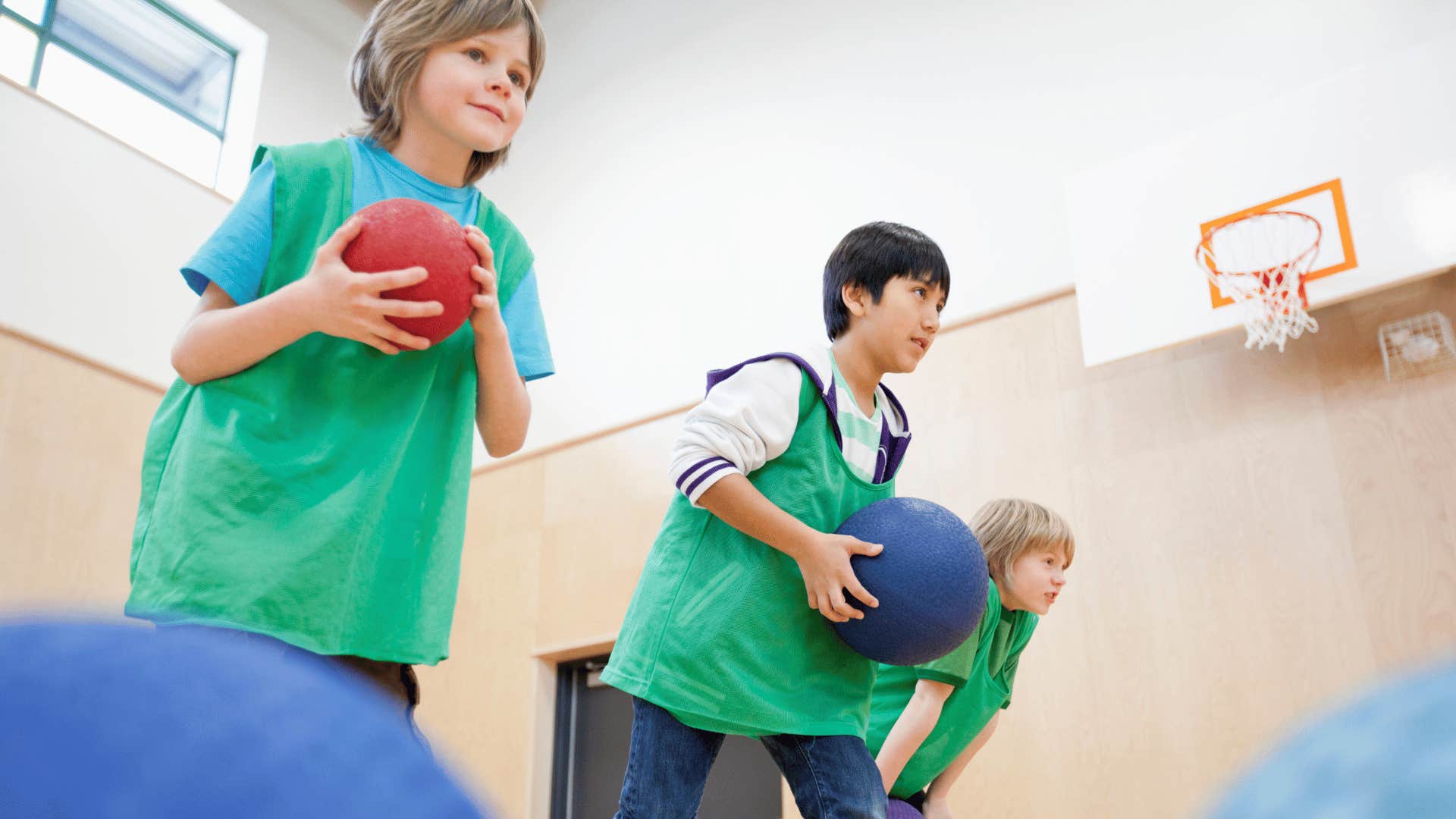 Hero Images from Getty Images via Canva
Hero Images from Getty Images via Canva
Dodgeball is a game that’s been banned to protect today’s kids. The idea of running around the school gym and getting hit with hard rubber balls brings back visceral memories for Gen X and millennials whose childhoods were defined by dodgeball. For some, the game was a chance to throw the ball at other kids a little too hard. For others, it felt like a school-sanctioned excuse for bullying.
In 2019, Education Week reported on the ongoing debate around banning dodgeball in schools.
“I think there is a huge irony that this debate is re-emerging now when social-emotional learning is at a fever pitch in education policy,” said former school principal and education consultant Dale Chu. “This idea that we have to be attuned to not only the academic needs of our kids but their physical and emotional needs is exactly right.”
Chu cited dodgeball as an important source for kids’ social and emotional development, noting that by “abolishing dodgeball, you’re just removing from the table a valuable tool that schools can use to engender those [social-emotional learning] values.”
SHAPE America, the largest membership organization of PE teachers in the country, takes the official stance that dodgeball should be banned in schools, because aggression is the core part of the game. Dodgeball can be vicious, especially for kids who keep getting hit with the ball, but it can also model communication and conflict resolution. Removing the game from schools to protect kids is a subject of major debate that isn’t likely to end soon, especially since kids’ emotions are at stake.
2. Red Rover
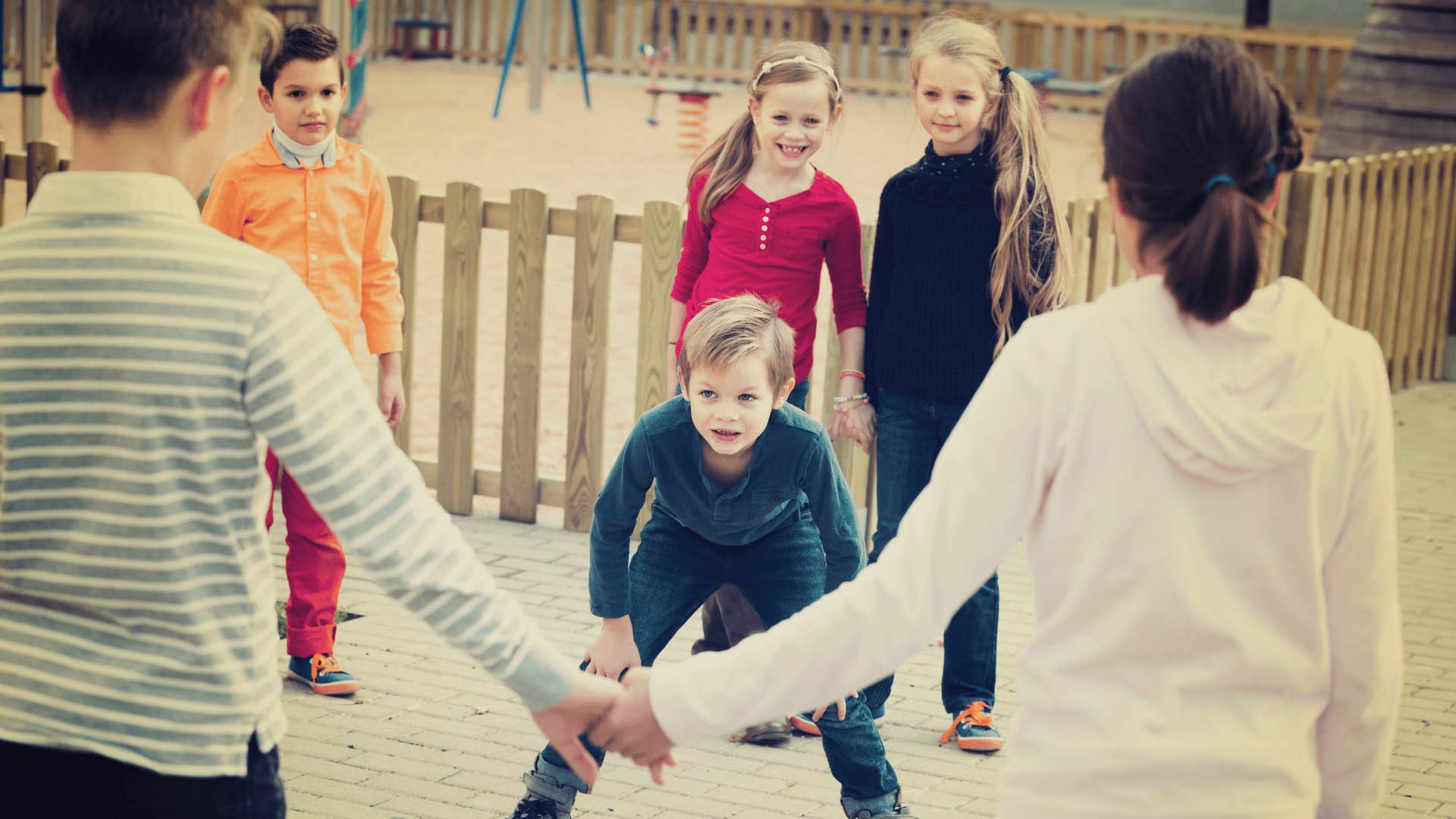 JackF from Getty Images via Canva
JackF from Getty Images via Canva
Red Rover was a classic childhood game for Gen X and millennials, but it’s being banned in schools to protect today’s fragile kids. Red Rover isn’t the world’s safest game. Kids link arms in lines, standing across from each other, then call for one kid to run across and try to break the chain.
In 2013, A school district in San Diego, California, paid $15,000 to settle a lawsuit filed after a 7th grader broke their leg during an unsupervised game of Red Rover. Court documents reported that the student required X-rays, casts, and physical therapy as a result of the injury. The resolution included a ban on games of Red Rover.
The outcry against school bans on Gen X and millennial childhood games describes Gen Z as “the strawberry generation,” for bruising as easily as the fruit. Yet Gen Z’s softer tendencies aren’t always a bad thing. They commit to staying vulnerable and living in their soft era. Gen Z might seem fragile, but really, they’re healing unattended wounds from past generations.
3. Musical chairs
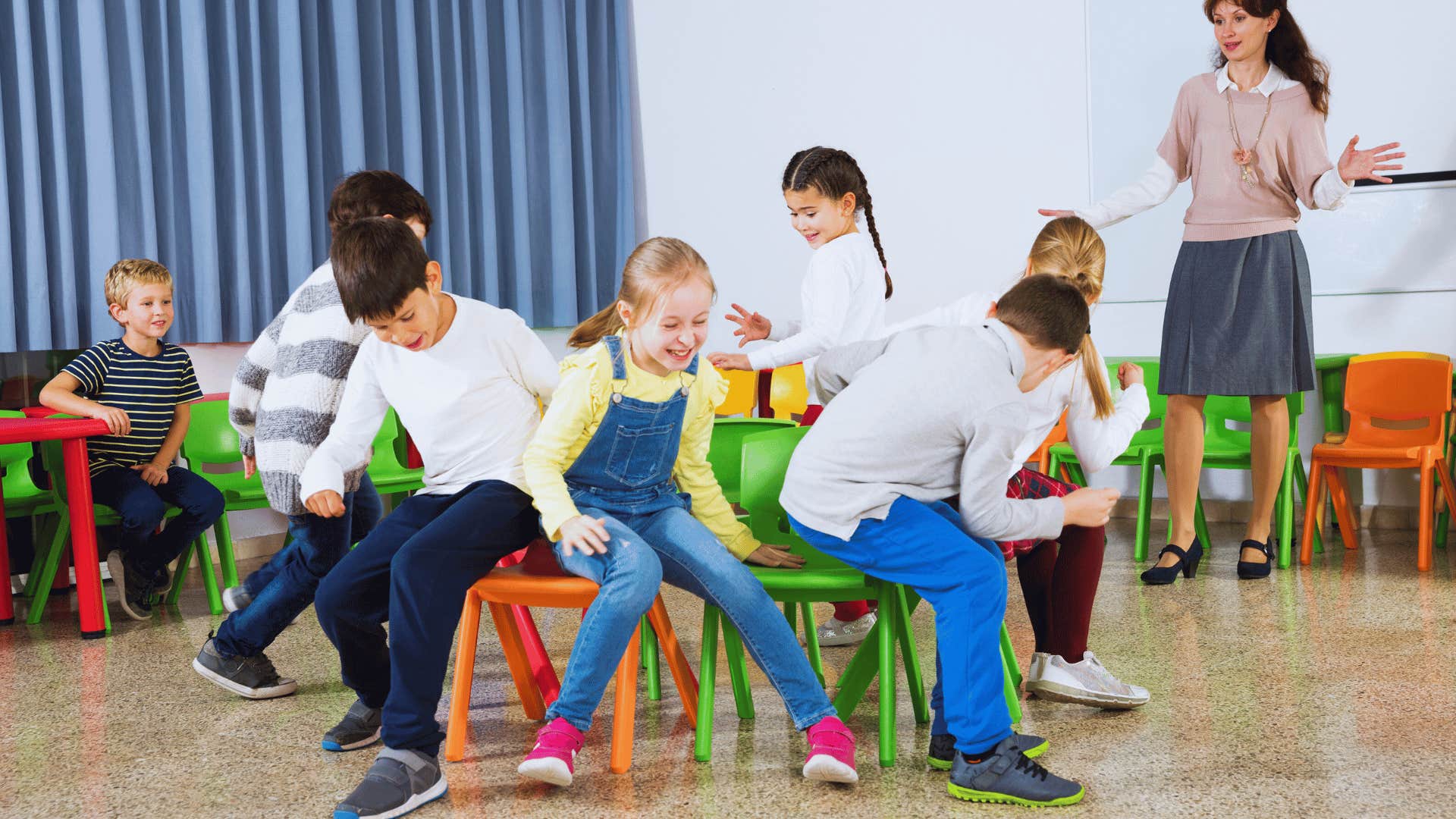 JackF from Getty Images via Canva
JackF from Getty Images via Canva
Musical chairs is a classic birthday game. Picture a bunch of little kids in party hats, running around a circle of chairs to their favorite song, then diving into a seat the moment the music stops. The fact that there’s one less chair than there are kids creates a gentle sense of competition. The sense of being left out is palpable for a lot of kids, which is why some schools want to ban musical chairs.
Yet Eva Glasrud, a psychologist and education consultant, revealed that musical chairs help kids develop crucial skills they’ll carry for the rest of their lives, like coping with their emotions and resilience.
“Resilience isn't something that magically happens once you turn a certain age,” she explained. “It's something you develop by dealing with the small disappointment of being the first kid eliminated from musical chairs or the last kid picked in the kickball game.”
Glasrud also pointed out that determination doesn’t come automatically, rather, “it’s something you develop by being disappointed by a certain result and vowing to practice, improve, and do better next time.”
Musical chairs is a fairly low-stakes game and an accessible way to teach young kids about navigating their harder feelings.
4. Unstructured play
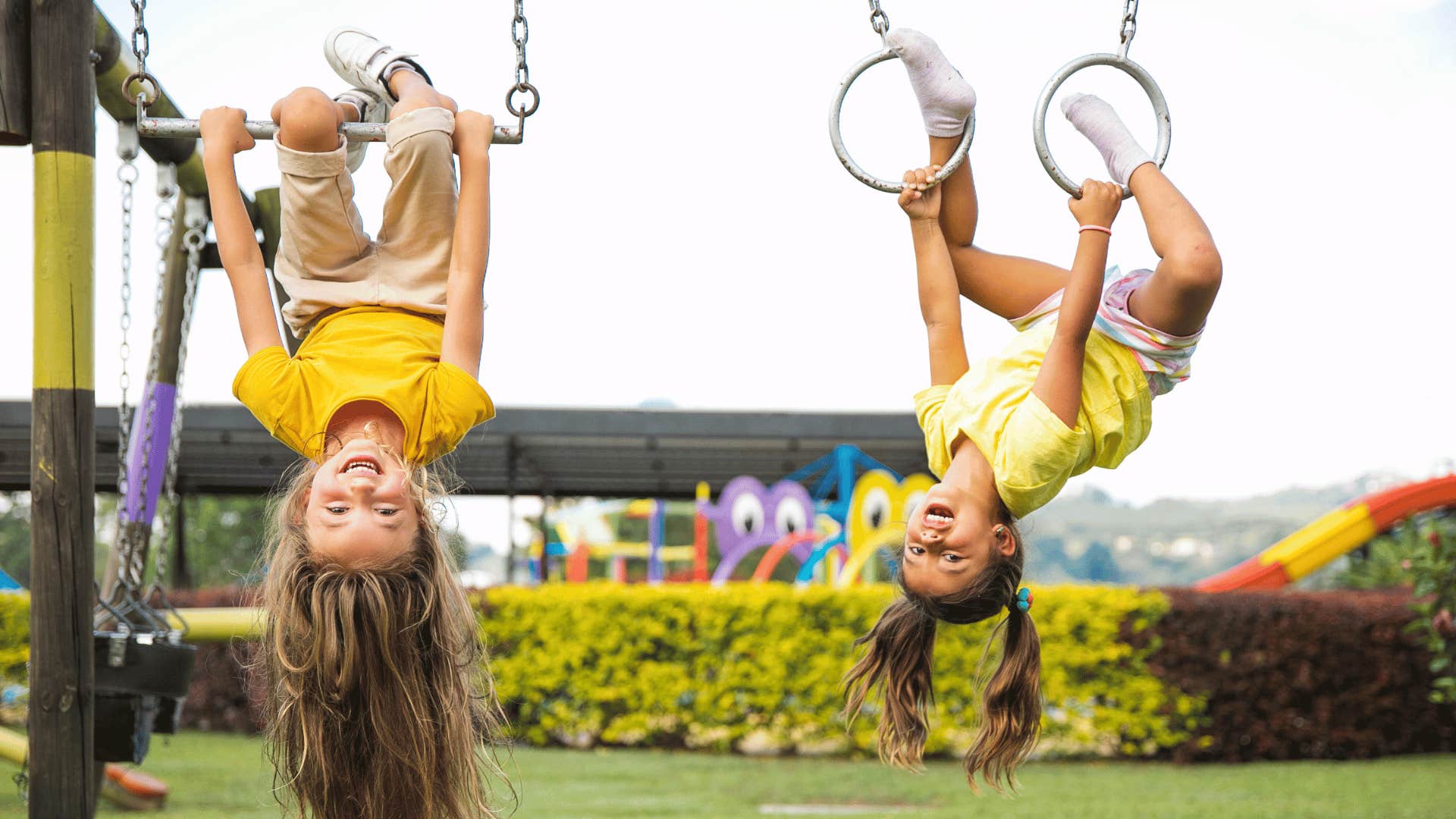 Pablo Merchan from Studio Columbia via Canva
Pablo Merchan from Studio Columbia via Canva
Kids spend most of their time at school, and when they’re not in school, they’re going from one extracurricular activity to the next. They get shuttled from band practice to swim class to dance lessons. They have less time to play in an unstructured environment, which impacts their emotional development.
When kids put on costumes and play make-believe, they’re building their own visions for how the world could be. Imaginative play builds kids’ creativity, along with their sense of compassion. As somatic therapist Yolanda Renteria pointed out, play is a powerful way for kids to build empathy and patience.
“Learn to see laughter, fun, and play in a positive light,” she advised. "Many adults are wired to see these as too much or inconvenient if those were the messages they received growing up. While there are times children can be redirected, a child experiencing these is always positive.”
To some parents, dressing up like a prince and chasing imaginary dragons through the house seems like a waste of time, especially when there’s math homework, but pretend play is how kids process how they feel.
5. Cartwheels
 Elena Photo via Canva
Elena Photo via Canva
For many people, doing cartwheels in the yard right before sunset is a core childhood memory, but it’s an activity being banned in schools as a protective measure. In 2013, a middle school in Port Washington, New York, restricted kids from doing cartwheels unless they were supervised by a coach. According to superintendent Kathleen Maloney, safety precautions took precedence over letting kids do cartwheels during recess because they’re too risky.
“Some of these injuries can unintentionally become very serious, so we want to make sure our children have fun, but are also protected,” she said.
Many middle schoolers opposed the cartwheel ban, saying running and cartwheeling and somersaulting are fun, plain and simple.
“You go for recess, that's your free time to go let loose and recharge,” said one unnamed student.
“That's all we want to do,” another student said. “We're in school all day sitting behind the desk learning.”
Kids today have worries that are bigger than adults can imagine. They deserve to spin and cartwheel their way across the schoolyard. They deserve to still be kids.
6. Tag
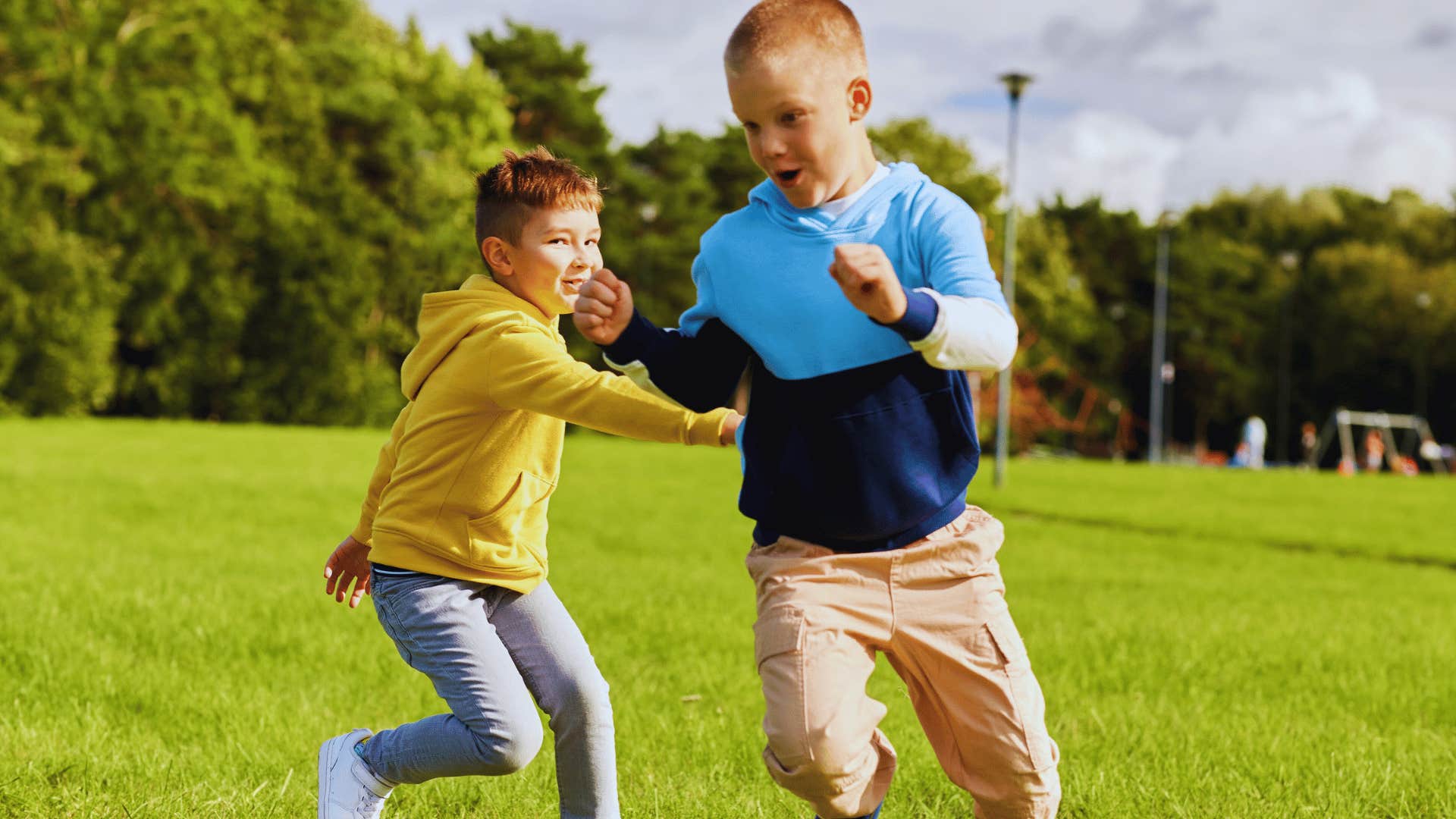 Syda Productions via Canva
Syda Productions via Canva
Tag is another childhood classic. For many kids, it’s the first game they really learn to play after peek-a-boo and hide-and-seek. Yet as NPR reported, many educators categorize tag as an “elimination game,” noting that the essence of the game puts some kids on the sidelines.
In 2013, an elementary school in Michigan decided tag games had become too rough-and-tumble among the kindergarten crowd, so they put a “No Tag, No Chasing” policy in place. The team of kindergarten teachers sent a letter home to parents, declaring that tag was a safety issue, due to kids “running in packs, pushing, knocking other children over, and making the game dangerous.”
After some controversy, the teachers wrote a follow-up letter, clarifying their intentions.
“Our concerns are based out of care and safety for each child,” they explained. “Yesterday we took the entire kindergarten group and modeled the correct expectations for appropriate recess behavior and demonstrated examples of safe, fun play.”
"All students… are expected to treat others with respect and kindness. When a negative behavior is recognized, the staff handles each situation with care and concern,” they concluded.
Games like tag teach kids how to play fair and how to lose gracefully. It’s a way for them to learn the valuable lesson that you can’t always win, and that’s okay. It’s how you handle the loss that matters most.
7. Snowball fights
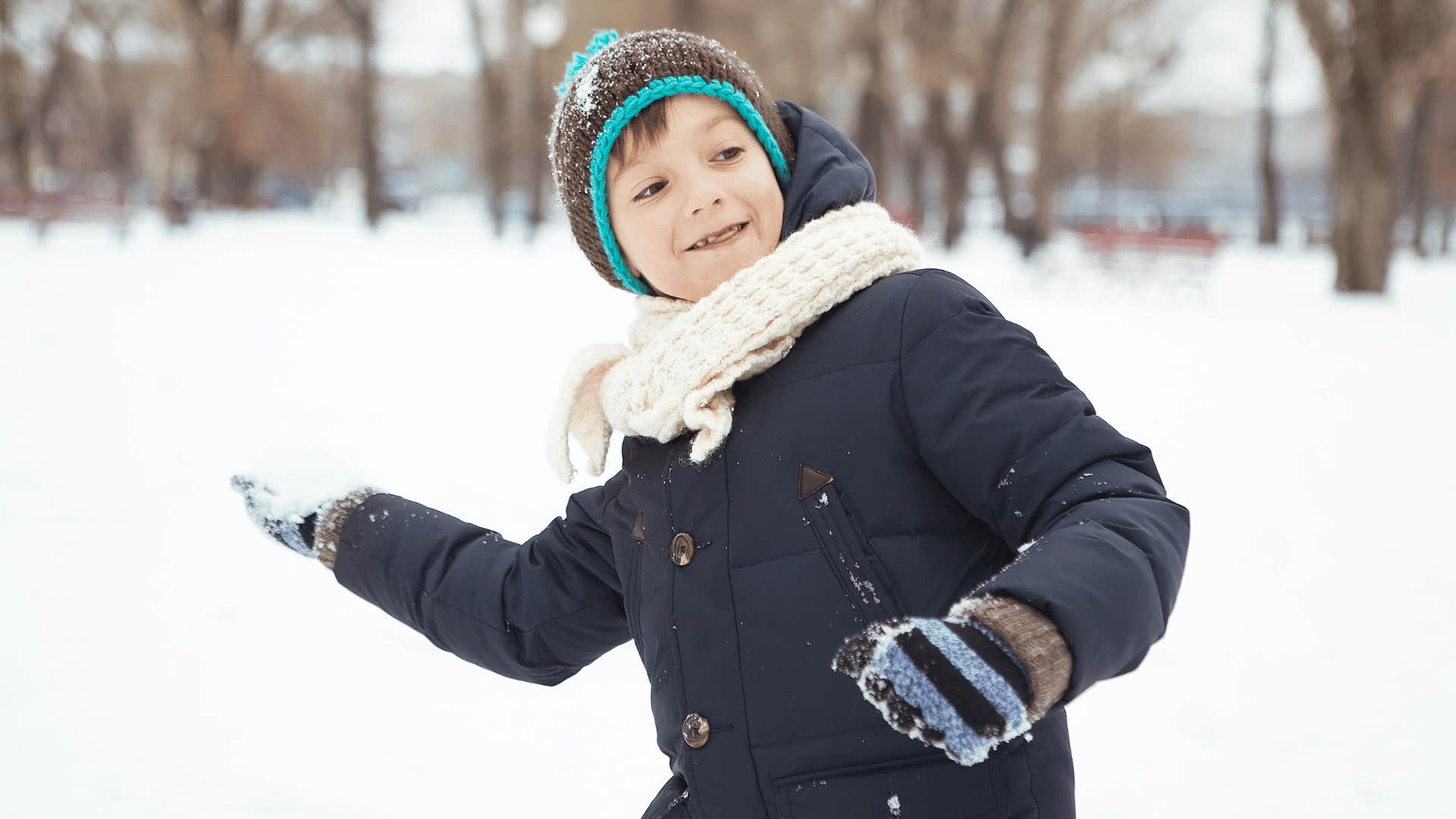 Aleks from Pexels via Canva
Aleks from Pexels via Canva
Snow days are one of the best parts of being a kid. Kids today might not call the weather to figure out whether school is canceled, but they still know the unbridled joy of staying home, drinking hot chocolate, and building snow forts. Snow days are a chance for kids to press pause. All there is to do is go outside and play until their fingers freeze or until one kids gets a snowball straight to the face.
Snowball fights are a time-honored snow day tradition, but they’re one of the activities being banned to protect today’s kids. With any snowball fight, there’s a chance one kid will chuck ice at another, leading to tears and super cold cheeks. Yet snowball fights are also a way for kids to run around in the fresh, cold air, and immerse themselves in the beauty and magic of the outside world, which they don’t get the chance to do often enough.
Today’s kids might be fragile, but they’re also over-scheduled, anxious and stressed out. Paige Metz, a PE teacher from California, believes being over-scheduled does kids a major disservice.
“We've reached a time in society where kids aren't just going outside and playing,” she said. “There are things that they've got to do that they're fitting into their schedule. And at the same time, they've lost the ability to just go out and play and to be kids.”
Kids should get a chance to skip out on studying and lob snowballs at each other. Letting kids be kids is one of the best gifts we can give them.
8. Capture the flag
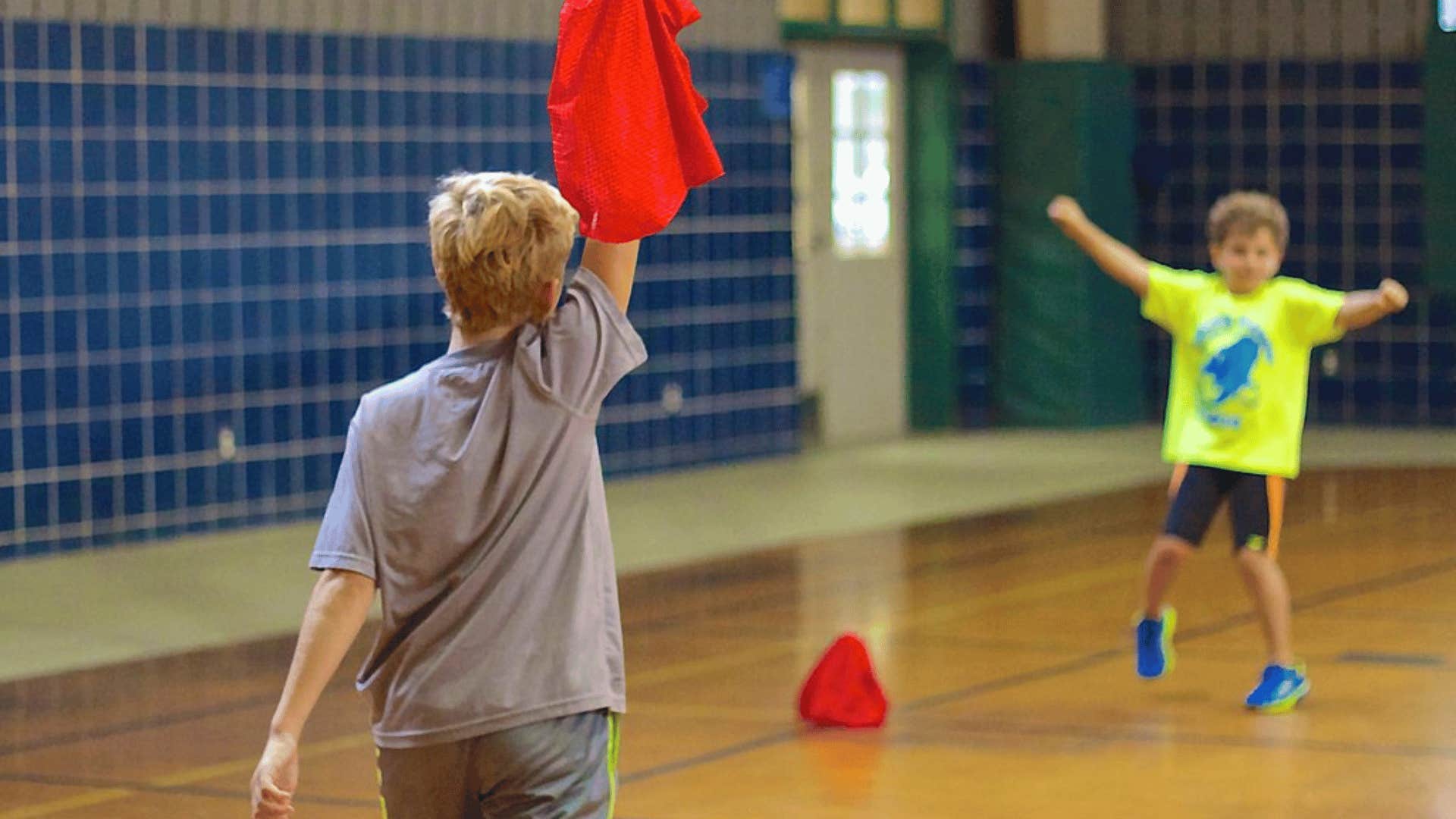 Lydia Liu, CC BY 2.0, via Wikimedia Commons
Lydia Liu, CC BY 2.0, via Wikimedia Commons
Capture the flag is a game of wits, strategy, and running really fast while wearing bright blue mesh pinnies. It’s a truly vintage experience. Ask Gen X or millennial parents about their best childhood memory and they’ll likely tell you a really long story about an epic game of capture flag they won at sleepaway camp.
Capture the flag is slightly more competitive than other games. Yet even when the stakes are high, kids learn how to build emotional tolerance and navigate losing out on something that mattered deeply to them.
9. Kickball
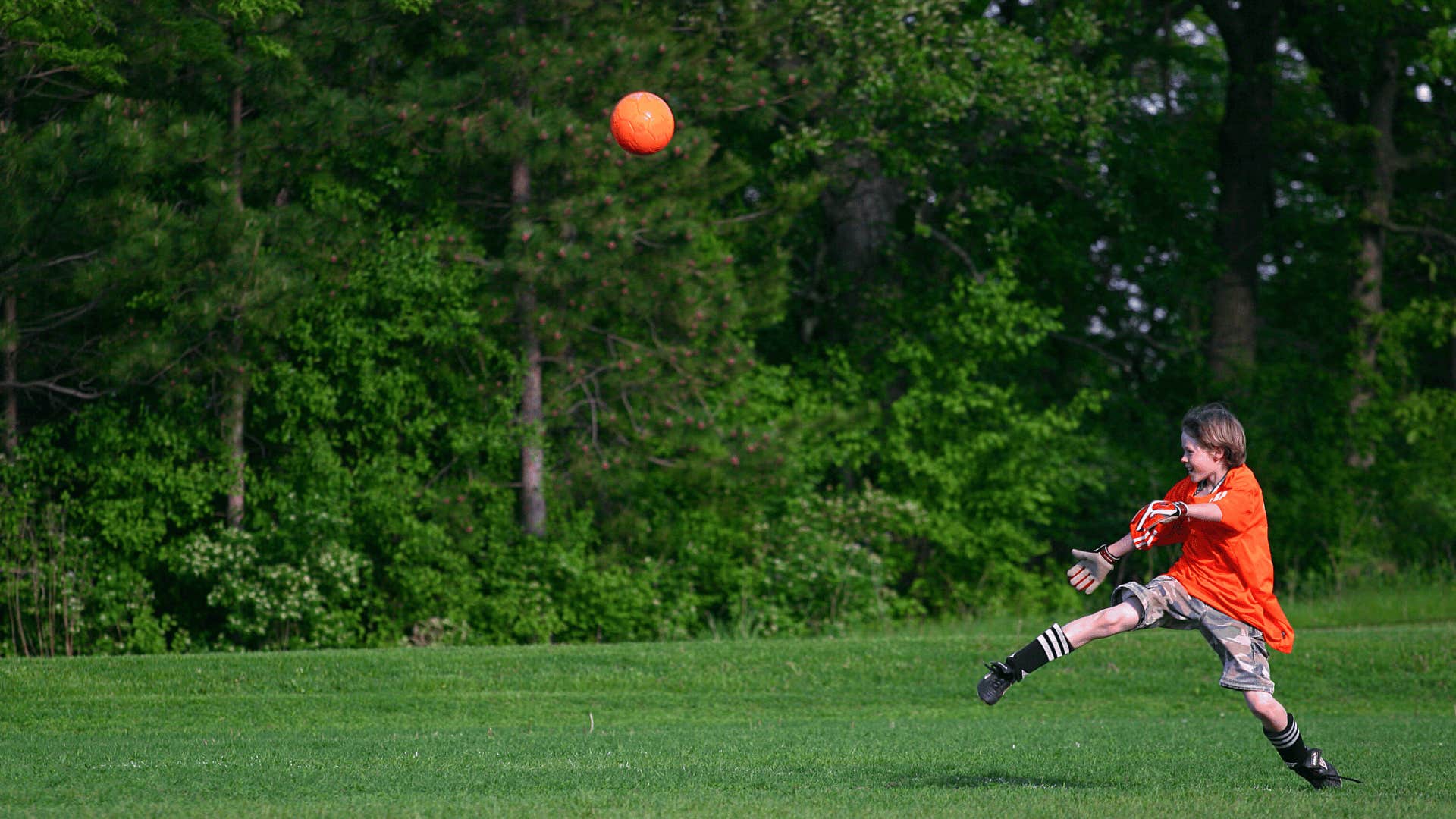 soupstock via Canva
soupstock via Canva
Of all the childhood games, kickball might evoke the most nostalgia for people who grew up spending summer nights playing kickball in the park, or parking lot, or field, or any other open space to punt a red rubber ball as far as it could go. Today’s fragile kids don’t play kickball, because it’s been banned in schools.
In 2011, the New York State Department of Health made a list of “risky activities” they wanted to regulate, including kickball. New York State Senator Patty Ritchie responded to the proposed regulations, stating, “It looks like Albany bureaucrats are looking for kids to just sit in a corner in a house all day and not be outside.”
Kids need to run around. They need to play in the sun and touch grass and be around their friends. They need to fall down and scrape their knees, and then, they need to stand back up and keep going.
10. Duck, Duck, Goose
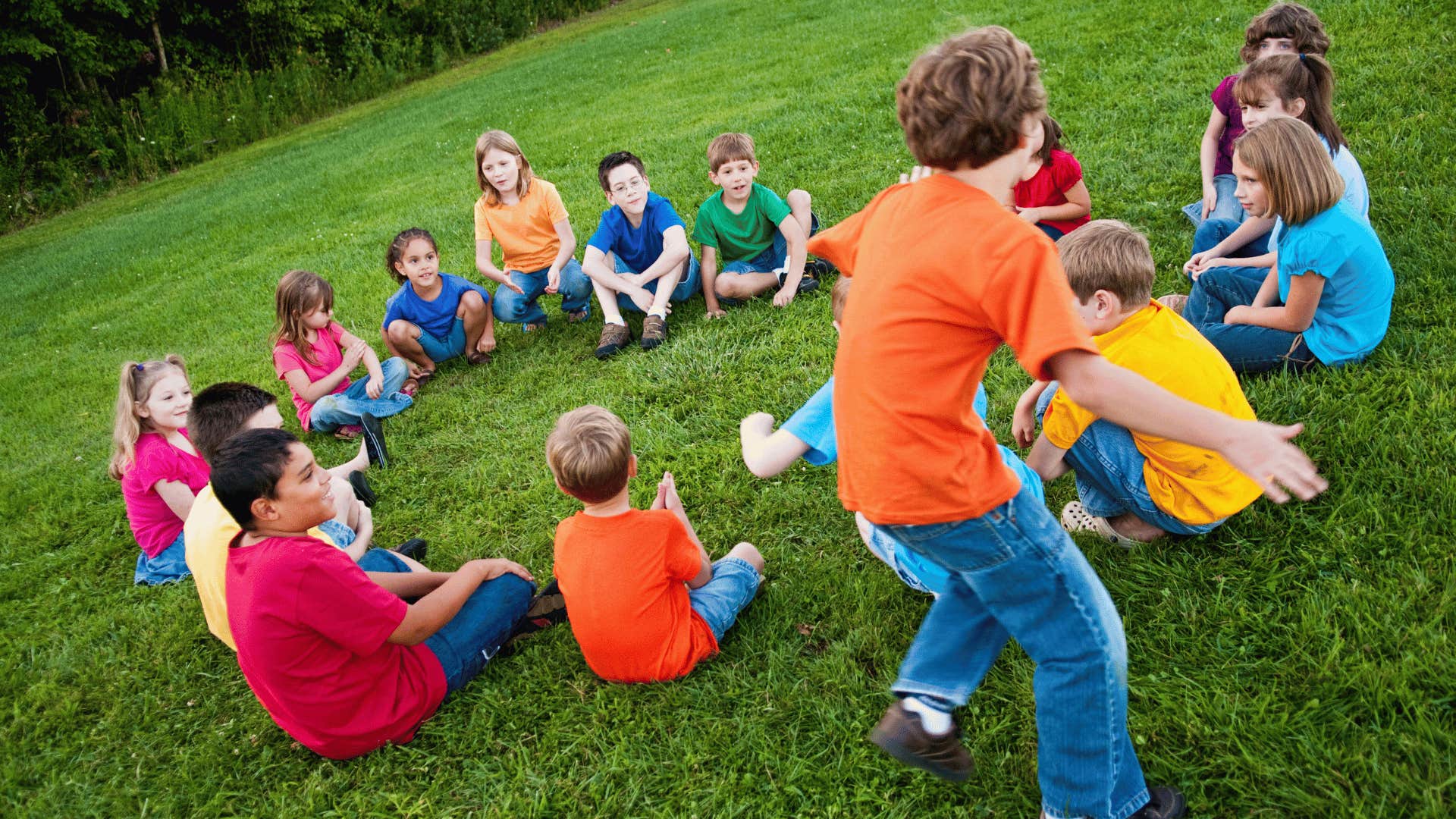 ideabug from Getty Images Signature via Canva
ideabug from Getty Images Signature via Canva
In 2016, the Alabama State Department of Education shared a list of games and activities that they discouraged, including Spud, Simon Says, and Heads-Up, Seven-Up. The list of “Inappropriate Activities/Games/Practices” included explanations for why the State Department of Education wanted activities like soccer and yoga to get banned, citing possible injuries, potential embarrassment, and being singled out as reasons for their proposed ban, along with an “over-emphasis on fun with no purpose or objective.”
When it came down to the ban on Duck, Duck, Goose, the list described it as, “A game of minimal participation, the chosen ‘goose’ attempts to get up from a sitting position and try to catch the ‘ducker’ who only has to go about 60 feet and already had a full running head start.”
“Everyone else just sits and screams at ear-shattering pitch and decibel levels,” they concluded.
One of the best parts of being a kid is getting to scream at an ear-shattering pitch, at least during an intense game of Duck, Duck, Goose.
11. Throwing ‘hard’ balls
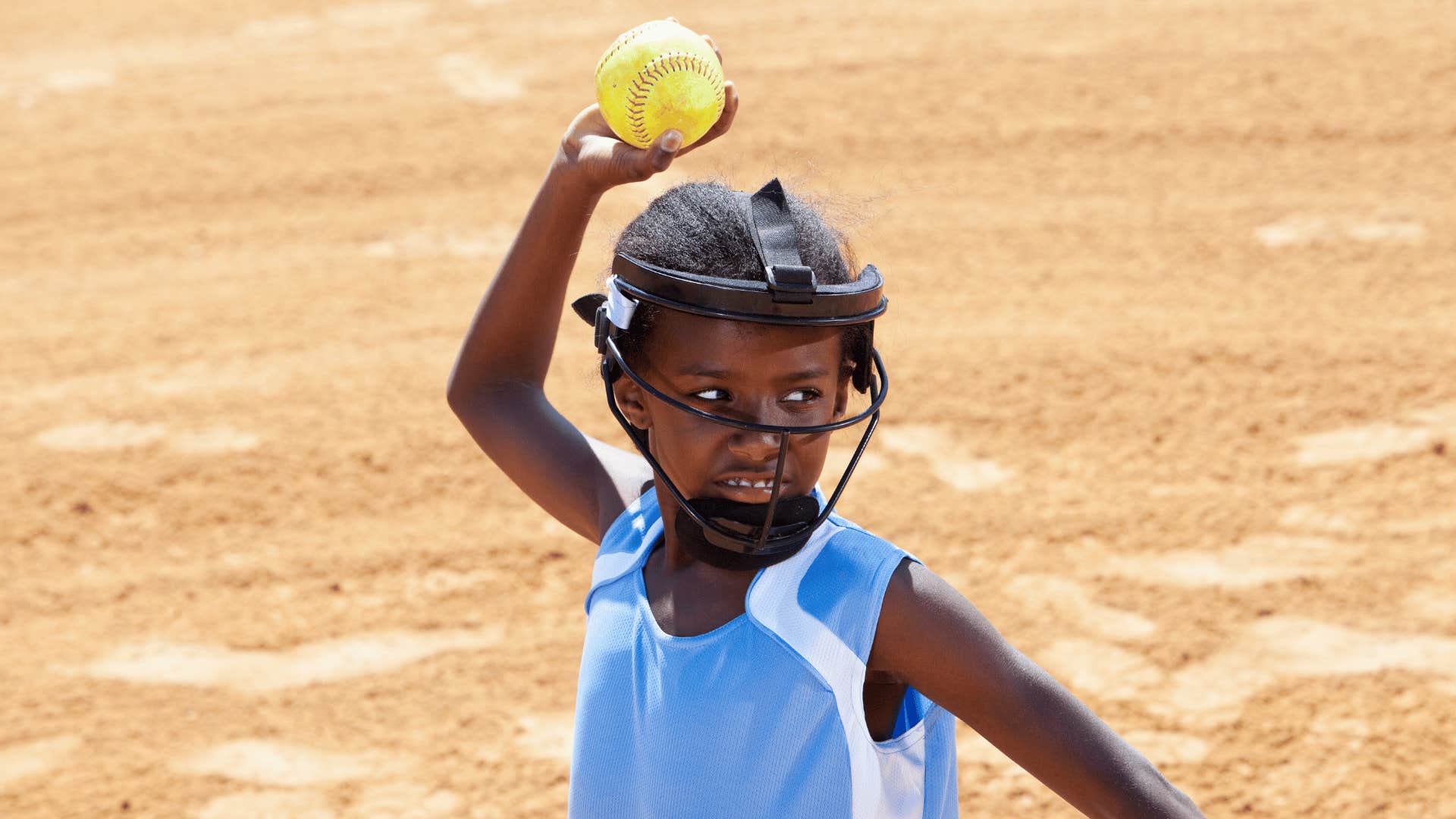 Kali9 from Getty Images via Canva
Kali9 from Getty Images via Canva
Middle school is a difficult and often awkward time. For many kids, getting time to decompress and be active is the best part of their day. Yet the same Port Washington middle school that banned cartwheels also banned the use of hard balls at recess. The school policy restricted the use of footballs, baseballs, lacrosse balls, and hard soccer balls to PE class, where a teacher would be present. During recess, they were limited to Nerf balls, made of a soft foam material.
“What we've noticed is that we've had a lot of kids in the nurse's office because of being inadvertently hit,” said assistant principal Matthew Swinson. “We know kids are going to get injured... but we have a responsibility to lessen injuries.”
As much as they might want to do so, parents and teachers can’t protect kids from getting hurt — emotionally or physically. They’re bound to trip during recess and get left out by their best friends. Getting hurt is an entry point for kids to figure out how to regulate how they feel and stay emotionally balanced, even when they’re upset.
Alexandra Blogier, MFA, is a staff writer who covers psychology, social issues, relationships, self-help topics, and human interest stories.

